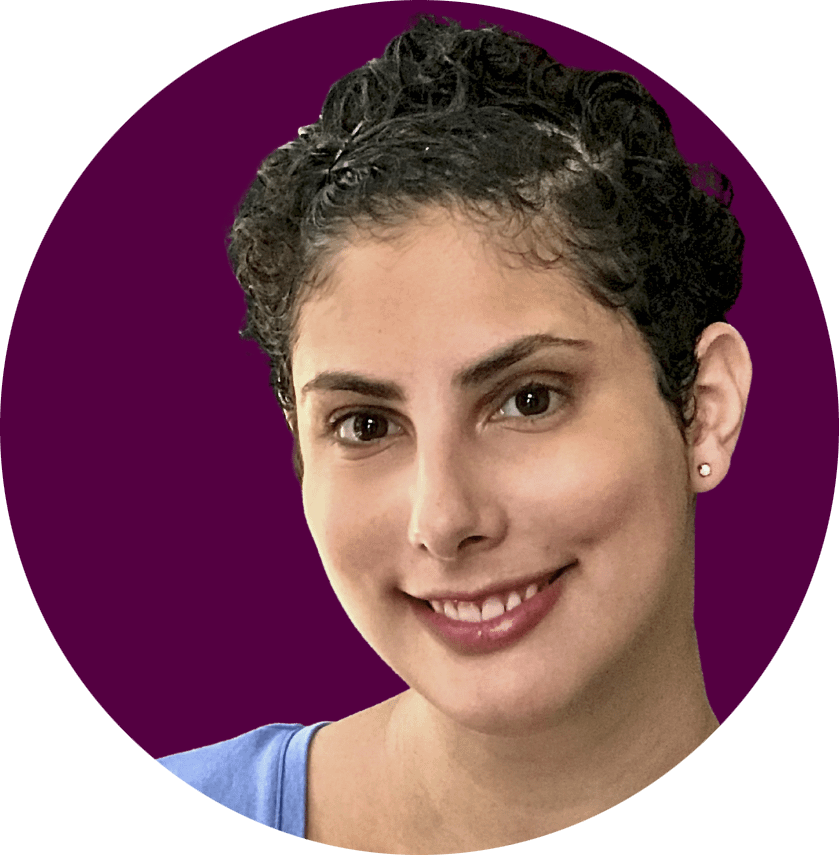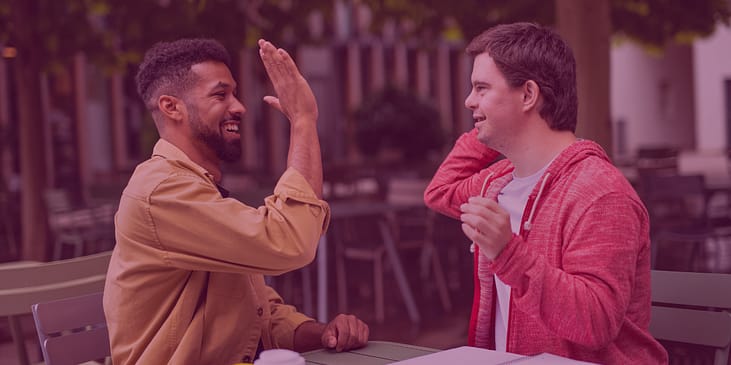By Drew Dakessian
The Oxford American Dictionary defines ‘ally’ as “a person or organization that actively supports the rights of a marginalized group without being a member of it.” The operative word here is ‘actively.’ Being a good ally to disabled people takes more than just supporting us with words. You should also take actionable steps to support marginalized people.
How Not to be an Ally
The first step to achieving true allyship is learning what not to do. One common mistake is perceiving disability as the embodiment of what the late disability justice activist Stella Young termed ‘inspiration porn’: “using images (of disabled people) as feel-good tools … based on an assumption that the people in them have terrible lives, and that it takes some extra kind of pluck or courage to live them.”
Another seemingly positive action that almost always has a decidedly negative impact is encouraging someone to “overcome their disability.” This implies that disability is inherently bad and it’s up to a disabled person to overcome their disability, thus signaling that you think their disability is something they should want to overcome.
Another misstep is attempting to hold a disabled person to the same standards as those of a non-disabled person in the name of “equality.” You may think that in doing so, you’re conveying that you view a disabled person as your equal but disabled people need to be treated equitably not just equally.
As the World Economic Forum explains, while equality is about being equal in status, rights and opportunities,” equity concerns how we achieve it through fairness and impartiality: “Equality sets the ground rules for creating a fair playing field, but it needs equity to make sure that everyone can compete on that field.”
That said, it’s equally unwise to infantilize someone with a disability. Doing so conveys to a disabled person that you think they’re inherently less capable — ableism in an ally’s clothing. Infantilizing disabled people gets used as reasoning for systems and policies that discriminate against people with disabilities, including sub-minimum wage, which is based on the assumption that disabled workers are less valuable to an employer than our nondisabled peers.
How, then, does one become a good ally?
An easy way to remember how to be a good ally is an acronym for the word ally itself developed by the Centers for Disease Control:
● Acknowledge (and respect) individual experiences and abilities
● Learn about different disability types
● Leverage your influence to promote accessibility and inclusion
● Yield the floor to people with disabilities to help identify and eliminate barriers.
Regardless of the nature of your relationship with a disabled person, you should research their disability rather than forcing them to explain it themselves and not make assumptions about or speak for that person. Remember, though, that not all acts of allyship are universal; a few interventions to be a good ally depend on the context in which you want to implement them. For example, in the workplace, it’s incumbent upon employers to strive to create an inclusive work environment for people with disabilities. They can do so by educating their staff about ableism, microaggressions, implicit biases, and by hiring qualified candidates with disabilities. In our Adjustable Table episode on employment, WID Board member Sevana Massih talks about how when she joins a new team, she asks her employer to bring in an external expert on Deafness who can help her new colleagues understand her disability, taking some of the pressure and awkwardness off of her shoulders while setting the whole team up for success.
Likewise, when planning events, the organizers must ensure that the spaces they manage — physical or digital— are accessible to people with disabilities. A good place to start is by asking attendees beforehand to ask if they need any accommodations and implementing universal design in built and digital environments so that all attendees have equitable experiences.
It is important to also remember that being an ally is the bare minimum and does not make you immune to criticism. When disabled people express to you that you may be exhibiting ableist behavior, do not be defensive. Listen to them and make timely, meaningful changes to your actions. It is important to remember to create safe spaces for disabled people to speak for themselves and you should never try to speak for them. Ask for feedback often, and respond with kindness and respect to show the people with disabilities in your life that they can trust you to treat them well when they provide their feedback to you.
Allyship with disabled people isn’t only for non disabled people. People with disabilities don’t all have the same disability, and even within the same disability, people can have different needs. Disabled people can also be ableist towards other people with disabilities, which is called “lateral ableism”. This can be especially disappointing, because we expect other disabled people to understand where we’re coming from. Sometimes accessibility needs conflict – for example, lots of sensory stimuli in a video can help some people focus on the content, while for others, it’s too much stimuli and it gets in the way of their focus. You can meet conflicting accessibility needs by providing alternate formats – in this example, you might make a version of the video that has no background music and simplified visuals, and a transcript of the video for people who can’t access either version. Make sure that all formats are equally easy to find, and if someone needs another format, do your best to accommodate them. It is important that disabled people support each other in creating pan-disability accessibility, and that requires seeing the fight against ableism as a collective responsibility, even when our own needs are already met.
Understanding Intersectionality
It goes without saying that many people automatically get pushed to the margins by virtue of certain aspects of their identity such as being disabled. But you may not realize it’s possible to be marginalized based on more than one identity. Countless disabled people live with more than one identity known to be disadvantageous in contemporary society. According to a February 2023 White House factsheet, only 17.7% of students with disabilities served under the Individuals with Disabilities Education Act (IDEA) are Black, yet Black students represent 39% of expulsions in K-12 public schools. This is because racist beliefs that are deeply embedded in society lead to disabled Black students getting disciplined and expelled for “bad behavior” rather than being provided with accessible support systems.
People with disabilities, too, have to make a conscious effort to ally with other disabled people who are multiply-marginalized. White people with disabilities must consider that they are more privileged than their BIPOC disabled counterparts; cisgender and/or heterosexual disabled people would do well to recognize that they’re inherently less disadvantaged than LGBTQIA+ disabled people. In short, anyone who has greater power and influence than a disabled person should make it their mission to support their intersectionality.
But don’t stop there — embrace the multiply marginalized. Find ways to enable them to share their unique experiences in a public forum. Learn (and use) inoffensive language when discussing disability and/or queerness, gender or racial identity. And if you’re in a position to affect change in the lives of the multiply marginalized, even if you have their best interests at heart, always consult — or, better yet, include — those people in that conversation. Allyship includes knowing when to “pass the mic”, redirecting some opportunities and resources when you can see that someone is more harshly impacted by the topic at hand than you are. Remember, there should be “Nothing about us, without us!”
An unfortunate reality is that, as noted by the Invisible Disability Project, allyship often is performative. Some non-disabled people assume the role of an ally and merely appear altruistic to feel better about themselves, or impress others. If your allyship consists of only words and virtue signaling with no actionable steps toward liberation, it is not genuine and effectual allyship. The allyship of those who don’t have disabilities is essential for the liberation of those who do.

Drew Dakessian is a Freelance Writer for WID.


0 comments on “How to Be a Good Ally to Disabled People ”